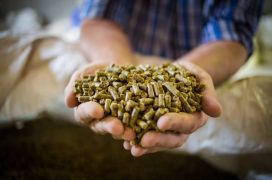Japan sets new MRLs for Zeranol in meat and seafood products

source: FoodPro Network International
TOKYO - On March 17, 2022, Japan’s Ministry of Health, Labor, and Welfare established MRLs for Zeranol in food producing animals. It is already in force for those products placed on the Japanese market.
Zeranol (α-Zearalanol) (CAS # 26538-44-3) is derived from Zearalenone, a mycotoxin produced by Fusarium (a fungi species) on many grain crops including corn, wheat, sorghum, and barley. Currently, it is produced commercially and widely used to improve feed conversion efficiency and promote growth rates in livestock production. However, the application of Zeranol to food producing animals has raised public health concerns due to its potentially endocrine disrupting properties. In order to protect consumers from the risk of residues, the main beef exporting countries, such as the USA, Canada, Australia, and New Zealand have established maximum residue limits (MRLs) for Zeranol, whereas EU has banned it[1]. Recently, Zeranol has been approved for use in animal products and seafood by the Ministry of Health, Labor, and Welfare of Japan and its MRL set[2] as shown in Table 1.
Screening for Zeranol can be carried out by enzyme-linked immunosorbent assay (ELISA) as the results are rapid, and cost-effective. Nonetheless, complex foods may be affected by unreliable results from this technique. Therefore, liquid chromatography coupled with tandem mass spectrometry (LC-MS/MS) is strongly recommended for result confirmation in the laboratory because of its high selectivity, specificity and sensitivity.
Source: SGS - partner FoodPro Network
Latest news
-
11 jan Nestlé Vietnam invests $100 million in coffee factory to meet growing consumer demand
-
11 jan TraceGains' Together Conference 2024
-
11 dec Alex Holt appointed Chief Sustainability Officer of Ahold Delhaize
-
29 nov Nestlé develops N3 milk with new nutritional benefits, launches first in China
-
21 nov Grocery shopping in Australia
-
20 nov Centuries-old-fermentation technique all hot again
-
12 sep The limits of exports
-
18 aug Detecting and Preventing Coffee Fraud
-
14 aug Connecting the world of food professionals
-
10 aug Sky-high expectations for vertical agriculture
Join the conversation
Are you already a member? Please
Login
Don't have an account yet? Please register